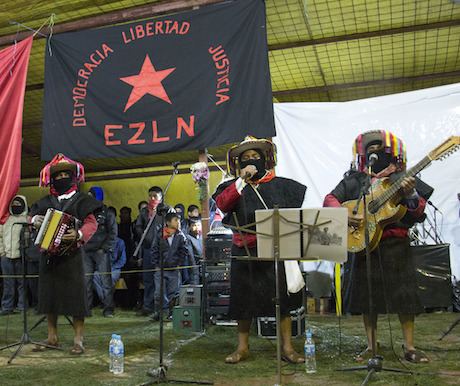30,000-40,000 (Acc. Government)
60,000-70,000 (Acc. to EZLN) 3,000 Location Chiapas, Mexico | Result Ceasefire | |
 | ||
Similar Mexican Revolution, Dirty War, Caste War of Yucatán, Cristero War, 1932 Salvadoran peasant | ||
The zapatista uprising 20 years later
The Zapatista uprising was the rebellion coordinated by the Zapatista Army of National Liberation in response to the implementation of the NAFTA agreement. After 12 days of fighting a ceasefire was called and peace talks began.
Contents
- The zapatista uprising 20 years later
- Zapatista uprising 20 years later how indigenous mexicans stood up against nafta death sentence
- Background
- Events
- Aftermath
- References
Zapatista uprising 20 years later how indigenous mexicans stood up against nafta death sentence
Background
The NAFTA agreement included cancellation of Article 27 of Mexico's constitution, the cornerstone of Emiliano Zapata's revolution of 1910–1919. Under Article 27, Native communal landholdings were protected from sale or privatization. However, this barrier to investment was incompatible with NAFTA. With the removal of Article 27, Native farmers feared the loss of their remaining lands, and also feared cheap imports from the US. Thus, the Zapatistas labelled NAFTA as a "death sentence" to Native communities all over Mexico. Then EZLN declared war on the Mexican state on January 1, 1994, the day NAFTA came into force. During the occupation of the city rebels painted pro-zapatista statements on the walls of buildings.
Events
In many cities including San Cristóbal de las Casas, Altamirano, Las Margaritas, Ocosingo, and Chanal, the Zapatista rebels attacked civic centers such as city hall. Once the rebels had taken the building they would use furniture and other office material to barricade themselves in the building. Hours later the Zapatista rebels abandoned San Cristóbal de las Casas so the Mexican Army may later recapture it. 600 zapatista rebels sacked the town of Altamirano which created an ensuing battle with government forces. In Chanal, the Zapatistas stated the purpose of their uprising; days later the town would be recaptured.
Aftermath
The uprising had attracted worldwide media attention. While human rights organisations emphasized the marginalization of the indigenous population, Riordan Roett (adviser to the Emerging Markets Group of the Chase Manhattan Bank) stated in January 1995:
"While Chiapas, in our opinion, does not pose a fundamental threat to Mexican political stability, it is perceived to be so by many in the investment community. The government will need to eliminate the Zapatistas to demonstrate their effective control of the national territory and of security policy."
By February the Zapatistas and the government reached an agreement, and sign the San Andrés Accords.
The Zapatista rebels were never totally eliminated and continue to live on to this day, controlling lands in Chiapas.
